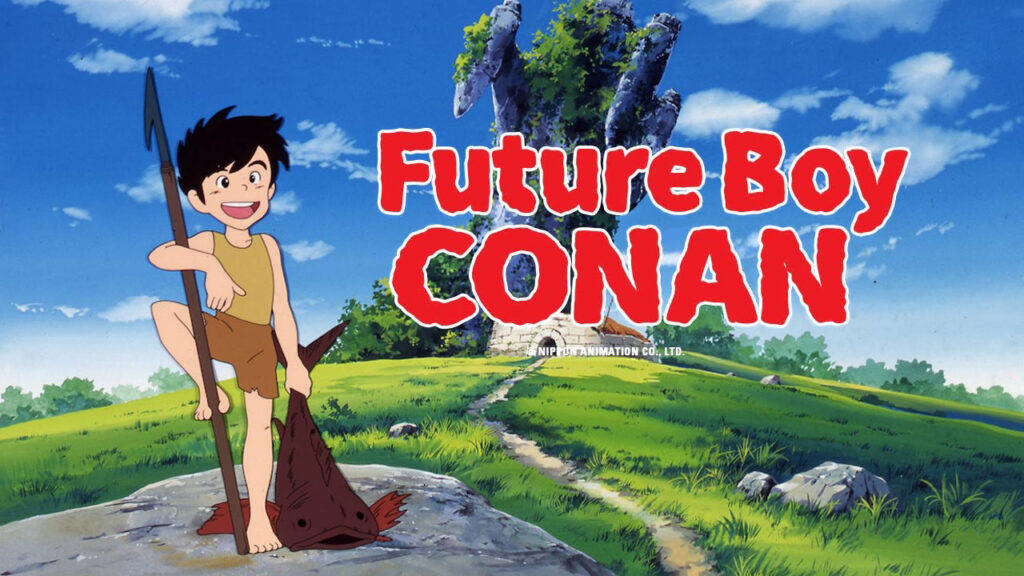
Future Boy Conan is a pre-Studio Ghibli, Hayao Miyazaki directorial debut. Airing on Japanese TV in 1978, it would be a watershed anime that would establish many of the director’s running themes and artistic style. Despite it being a huge hit in any country it aired, Future Boy Conan never made it to North America… until now.
If there was any reason why Miyazaki is considered a master director of his craft, it is because of Future Boy Conan. To have seen this in the late 70s must have been mind-altering, and undoubtedly inspired countless forerunner anime directors to come. The best part about Future Boy Conan, is that its story-telling and artistry still hold up and is enjoyable to anyone.
Future Boy Conan was produced on a modest budget during a time when tools for TV animation were extremely limited and deadlines were tight. How did he do it? A lot of what makes Future Boy Conan so incredible is its utterly pitch perfect pacing and scene direction. With GKIDS’ blu-ray, the whole family can enjoy this exhilarating adventure in crystalline, saran-wrap clarity and in English too.
Future Boy Conan (1978)
Studio: Nippon Animation
Publisher: GKIDS
Director: Hayao Miyazaki
Release Date: November 16, 2021
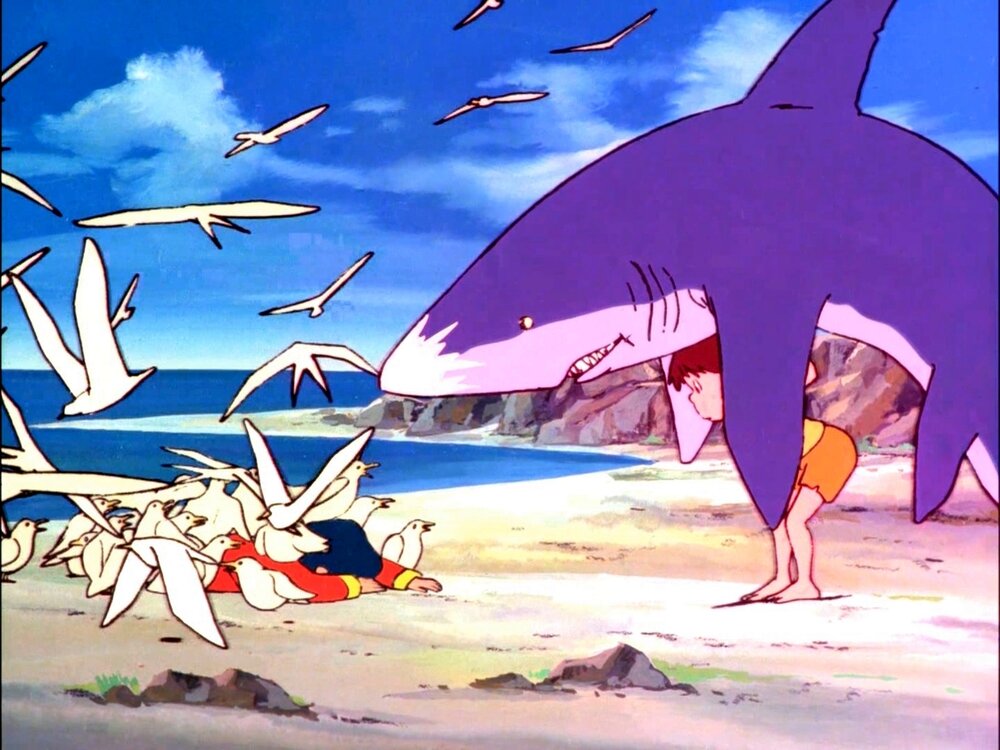
Conan is a boy who lives in the post-apocalyptic world covered by a great sea, where water levels have risen due to a huge war that took place in the past. The human population is just barely hanging on, with only two major settlements making up a majority of civilization: High Harbor and Industria.
Industria is a technologically advanced society that relies on the prewar machines and systems for their everyday lives. The people are made up of several classes: the powerful elite, the military, and the lowest on the food chain being the worker class; who are functionally slaves. Industrians live off of artificially processed food product and their highest officials seek more power to extend the reach of their nation, while the people of High Harbor are like farmers who live humble and happy lives.
Future Boy Conan takes a very simplistic take on “technology bad, farm life good”, which can be hard to take seriously. High Harbor citizens are only interested in their simple way of life and don’t seek power, which is a naive outlook on humanity. Almost all Industrians are depicted as complete psychos who would even kill a child.
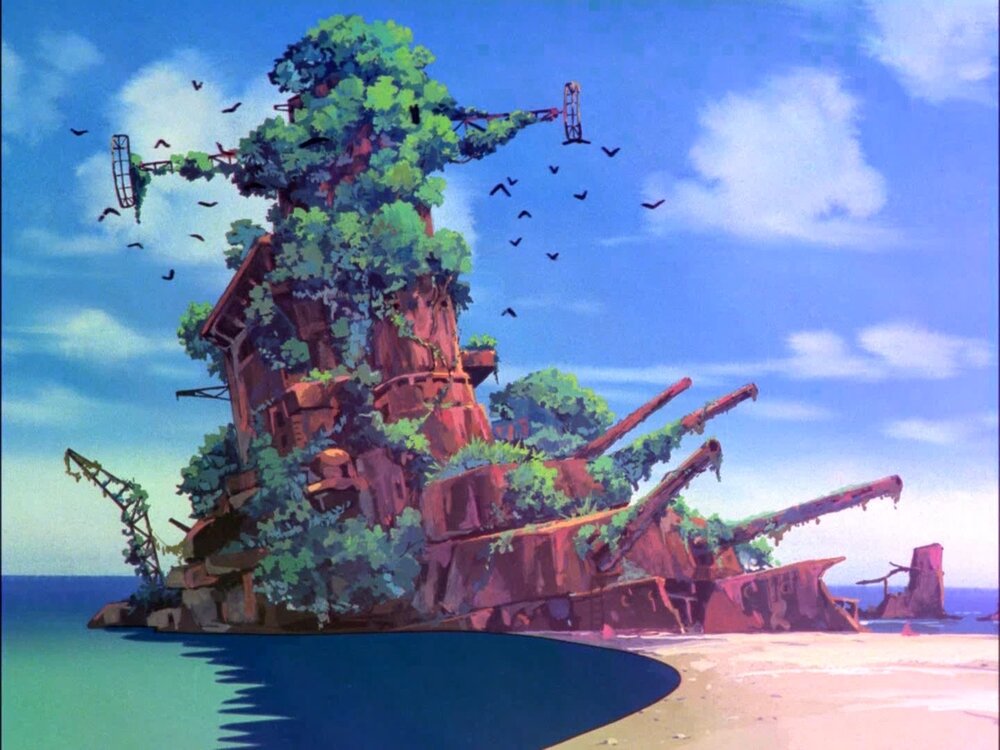
Conan doesn’t live in Industria or High Harbor; he lives with his adopted grandfather in the secluded Remnant Island. All his life, he and his grandfather assumed they were the last humans left on Earth. Living together in a wrecked rocketship, Conan learned how to live off the land and adapted to endure the harshest conditions imaginable.
Calling Conan strong is underselling how tough he is. Being the only able-bodied person on Remnant Island meant he had to do his own fishing with his harpoon and that would require him to hold his breath for a long time. When the show opens, Conan is already about ten years old and can dive as deep as a shark and endure incredible depths for several minutes.
His strength is unbelievable. He has prehensile toes with ape-like grip strength and has uncanny reflexes. Throwing punches at this kid usually means only hitting air. His dexterity and talent for survival allows him to subsist in this harsh world. He is like Hercules, but his growth comes from him learning how to be a hero and how brave of a person he can be.
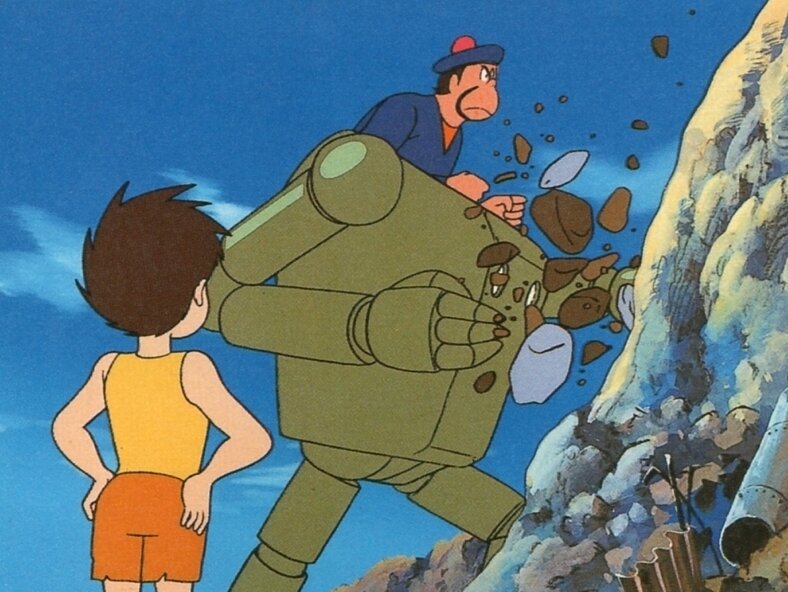
Conan may be incredibly resilient and resourceful, but he has a lot to learn about the world. While he is innocently naive, by the end of the journey he displays true leadership and others depend on him. It is a gradual shift that builds as Conan is constantly put to task. As he learns and grows about this world, so do the viewers and this makes it very easy to get invested with the story.
After a highly emotional departure from Remnant Island, Conan makes several friends along the way. The supporting cast are made up characters like Jimsy, the scrappier but loyal islander who loves to hunt and eat frogs. There’s also Captain Dyce is the oafish captain of the Barracuda who’s allegiances change depending on what would best suit his selfish needs at any given moment and his crew
The most important supporting character is Lana; a psychic girl who can telepathically communicate. With her gift, she can find her grandfather who happens to be an Industrial engineer and knows the coordinates to a satellite that can power Industria with solar energy. Lana’s character development is backloaded and when she finally grows, she becomes selfless and unflinchingly brave.
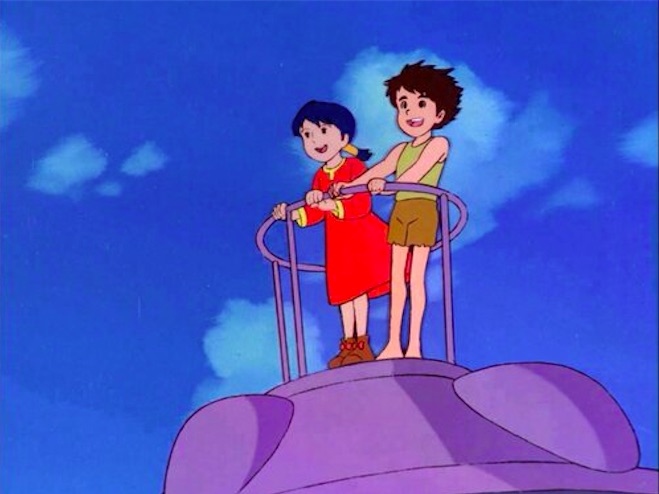
Lepka is one particular Industrian who has his own agenda where he requires Lana’s grandfather, Dr. Lao. To get to the doctor, Lepka will stoop to any means necessary to make Lana do his bidding. His insane desperation makes him an incredibly despicable antagonist.
He murders his own soldiers, tries to torture children, and he aims to use the solar energy to power a nightmarishly huge prewar flying fortress. With a weapon like this, any civilization left on the planet would have to surrender to him or face annihilation. Lepka’s evil is so strong that he acts impulsive and often is just winging it.
As a villain, he is slightly sloppily written. His plans are easily foiled and because he is so emotional, he makes rash decisions. It helps that his design is unusual; he looks like a doughy Peter Lorre.
It is a wonder why any of his troops follow him. The Industrian soldiers aren’t completely evil; they are depicted with some nuance late in the show. Some of them settle down and choose to not fight when a peaceful way of life becomes an option.
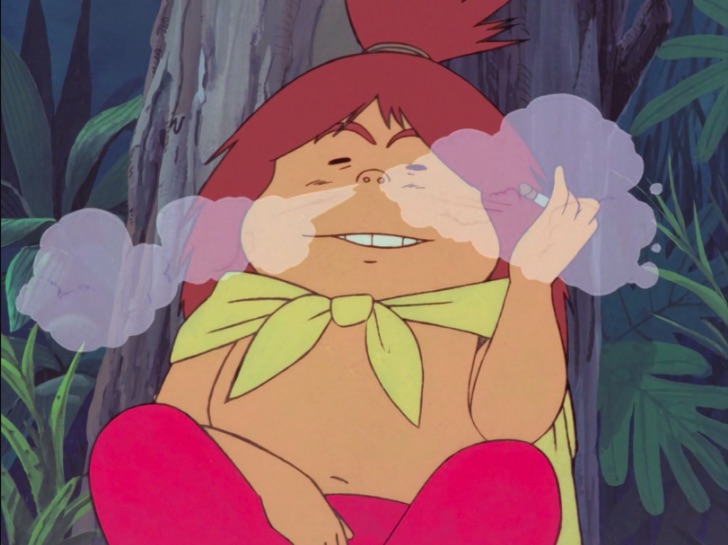
Future Boy Conan is from a different, better time. This was when anime could have scenes of kids smoking and drinking. Despite these unsavory activities, Future Boy Conan is a wholesome show aimed for kids that respects their intelligence and never condescends.
There are some intense scenes where kids get beaten by adults and sometimes almost brutally murdered. Scenes like this enhance the excitement and drama. Having real stakes in a kid’s show is rare and Future Boy Conan has guts to not shy away from having consequences.
The pacing of Future Boy Conan is easily its best feature. It feels less like a series of episodes, but more like a really long epic movie that is gradually building up to a huge climax. There is no filler and at 26 episodes, it feels really tight. Not a single episode is wasted and there is no clip-show among them.
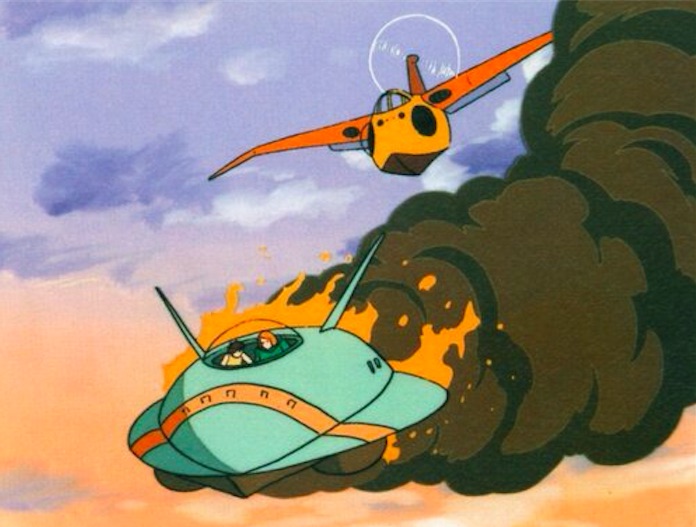
This was Hayao Miyazaki’s first time directing a project and even this early in his career, his style is all over it. The themes of environmentalism is steeped in Future Boy Conan, but it is a little bit more nuanced than “nature good, technology bad”. Nature is depicted as equally harsh as the horrible human creations and can be far worse than anything we can ever dream of.
There are many scenes of mother nature’s cruelty. Devastating tidal waves that destroy entire towns. Earthquakes that level cities. Vistas are frequently shown with the spires of long ruined skyscrapers, reaching out from the ocean depths as reminders of the massive extinction event that occurred.
Miyazaki’s character designs are simple, but highly identifiable. This works out well since it means characters are easier to animate and they are easy to read. Background art has all the Miyazaki staples: the rolling green hills and hopeful blue skies. Nature is always depicted as idyllic and inviting, while mechanical elements are dark and often menacing.
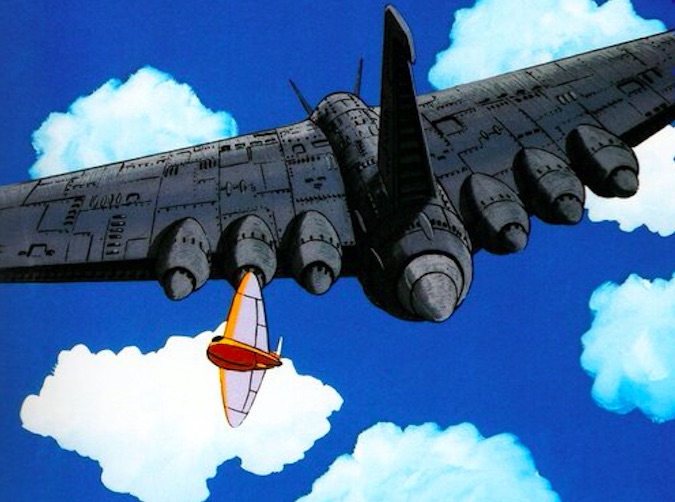
This blu-ray from GKIDS shows Future Boy Conan as the best it can possibly look. With something this old in 1080p, visual quality will yield diminished returns. The more resolution gained will only further emphasize technical flaws or blemishes.
For an animated show from 1978, the image quality holds up well. There is almost no dirt and film grain has been maintained for a nice warm image. Imperfections in the cel painting is inevitable when something like this is blown up to HD. Some splotches will be visible, but this is the trade-off for those beautiful background illustrations to look as sharp as possible.
The 1.33:1 aspect ratio was the standard of its time. The black bars on the sides of the screen is something that cannot be helped. Thankfully, Miyazaki’s screen direction is excellent at guiding the viewer’s eye. After a while, its easy to forget about the old aspect ratio and to simply be absorbed in the adventure.
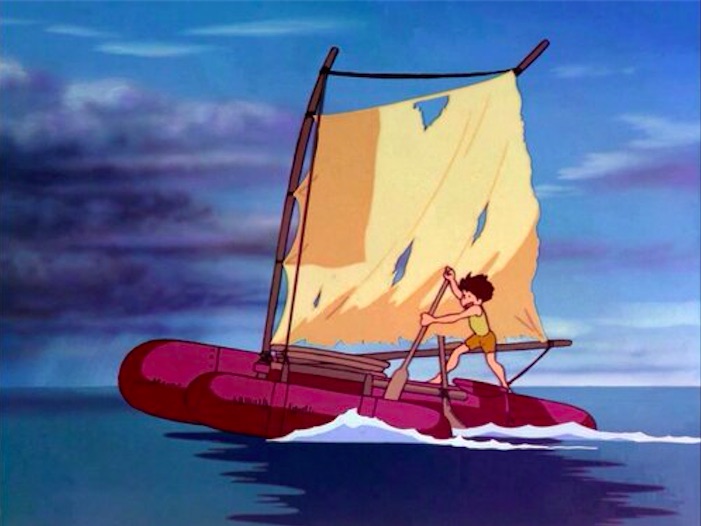
The audio standard for TV back in 1978 was mono and that has been faithfully maintained. Anyone with an elaborate sound system will find their set-up to be wasted with the intended soundscape for Future Boy Conan. This also applies to the newly recorded English voice track.
Since Future Boy Conan never was released in North America until 2021, it never had an English dub until now. It would be easy to imagine how this would have sounded like if it got a dub back in the late 70s. Some scenes would have likely been censored and possible had some dubious casting choices.
Thankfully, the dub that Future Boy Conan has gotten is of high quality. English anime voice acting has come a long way since the late 70s and early 80s. All English voice actors are very close matches to their Japanese counterparts and there were no egregious liberties taken with the script. Dialogue and delivery comes of very naturally.
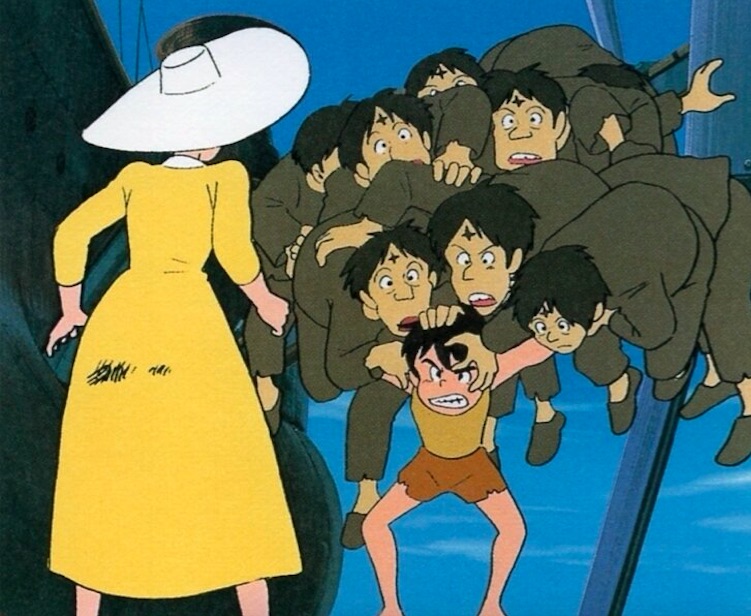
Some of the technical aspects of this blu-ray release are a product of the time that Future Boy Conan was made, which can be forgiven. What cannot be easily overlooked is the lack of bonus features and extras.
There is only a trailer for the blu-ray on the fourth disc. There are no production notes, no new interviews, no archival interviews- there isn’t even anything on the process of the English dub production. This could have used a concept art viewer and unused designs to browse.
The blu-ray package does come with a pamphlet that does feature a few black and white character sketches. While this is a welcomed extra, it is only 16 pages long and could have been much more substantial. This needed examples of the background art and full color illustrations.
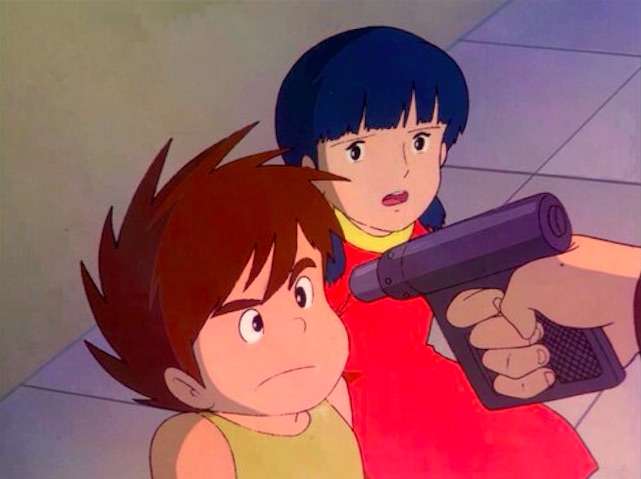
Future Boy Conan is an exhilarating viewing experience. It is full of action and exciting character driven moments that drive the story forward at a brisk pace for almost 800 minutes. Its only weakness is that it has a very dated intro song that sounds like a stately anthem.
These kinds of songs were common for kid’s shows in the 60s and 70s and they are not exactly the most catchy or energizing. The outro song is equally lame. It sounds like a sappy love song that would be sung by drunken Japanese ladies at a karaoke parlor. These songs don’t fit the feel of Future Boy Conan and it could have used something more catchy.
Ignoring the intro and outros of Future Boy Conan is easy. It is undeniably a masterpiece that is highly entertaining and is an artistic achievement for TV animated fantasy adventure. This is wholesome entertainment that isn’t afraid to have enough edginess to make the stakes matter.
Future Boy Conan was reviewed on Blu-ray using a copy purchased by Niche Gamer. You can find additional information about Nicchiban’s review/ethics policy here.